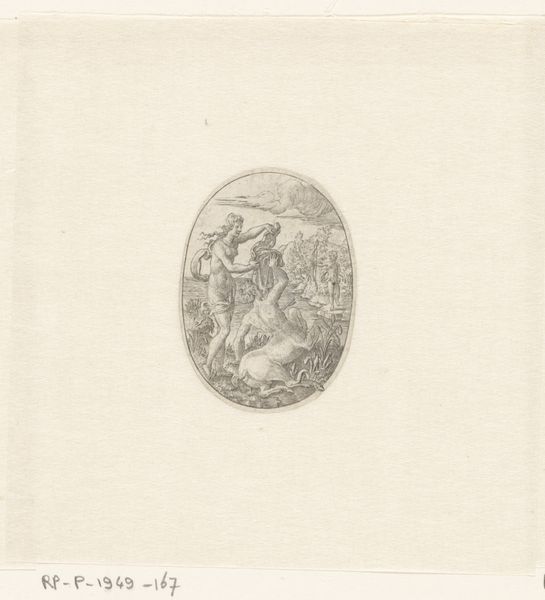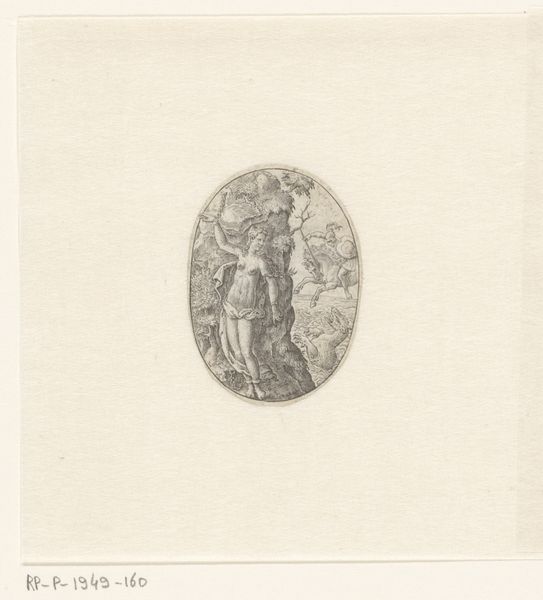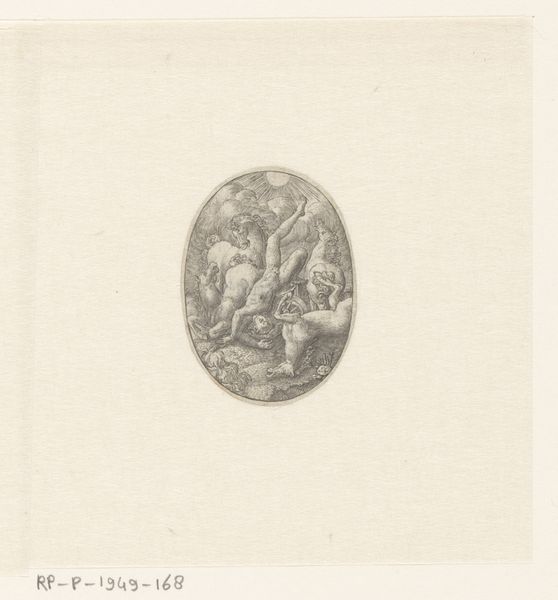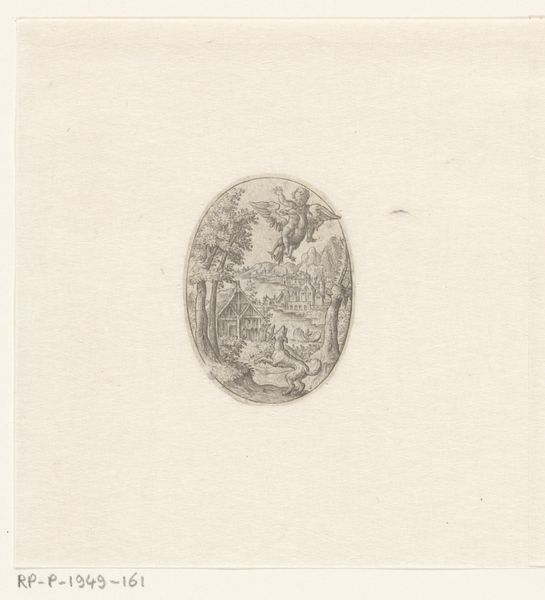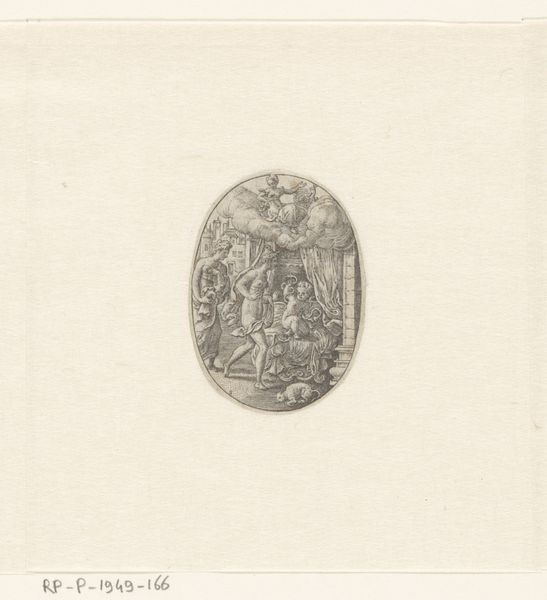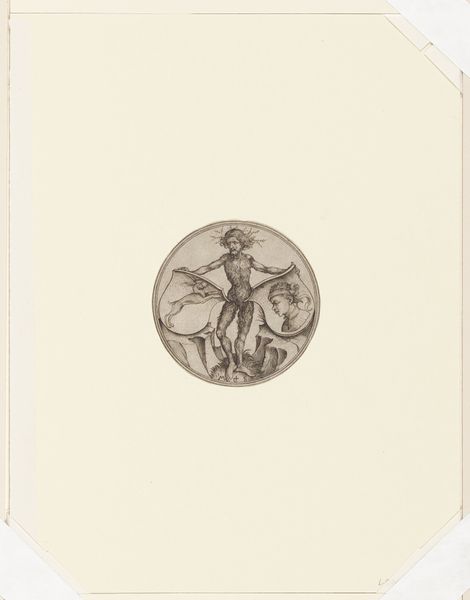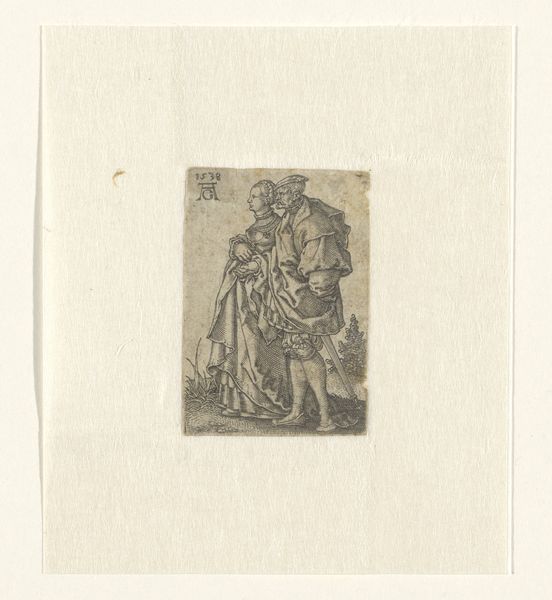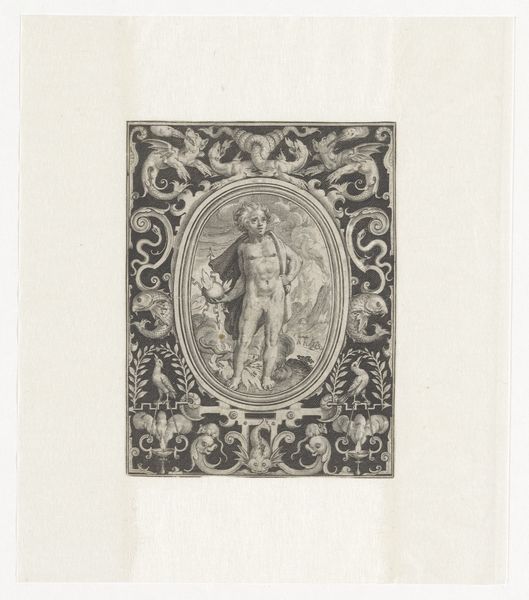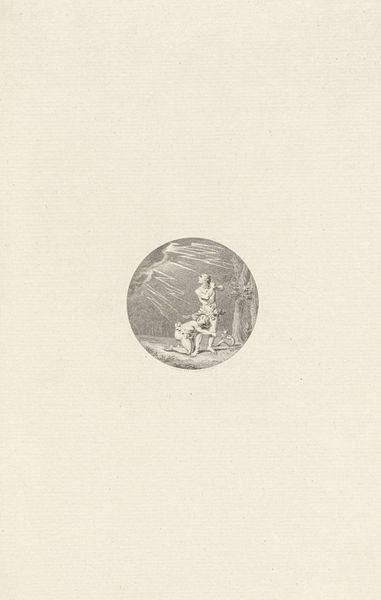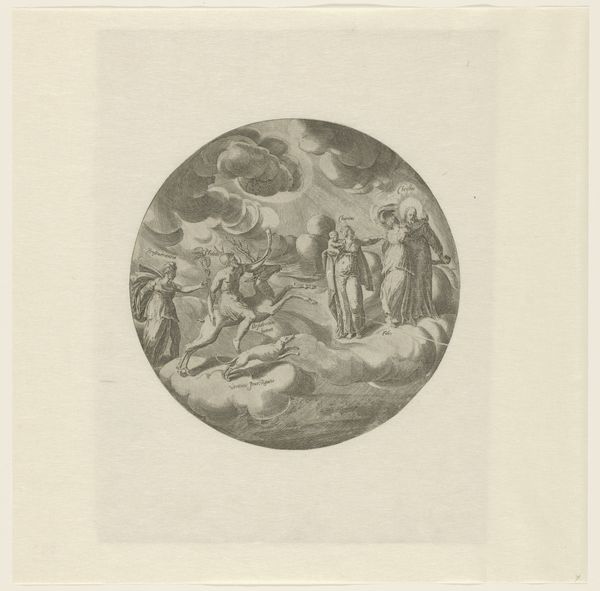
print, engraving
# print
#
old engraving style
#
mannerism
#
figuration
#
line
#
history-painting
#
engraving
Dimensions: height 45 mm, width 33 mm
Copyright: Rijks Museum: Open Domain
Editor: So, here we have “Hercules en Cacus” by Etienne Delaune, created between 1573 and 1580. It's an engraving, currently housed in the Rijksmuseum. It feels… illustrative, almost like a page from an old book. What strikes you about it? Curator: The immediate thing is the line work and its implications for labor. The intricate detail achieved through engraving speaks volumes about the skill and time invested. Think of the social context: the rise of printmaking democratizing images, taking stories like this of Hercules from the elite to a wider audience. Editor: So, the material itself – the engraving, the print – it changes the story's accessibility? Curator: Precisely. Before, visual narratives like this were largely confined to painted works, accessible only to those who could afford them or enter certain spaces. This engraving makes it reproducible, a commodity, almost. We can think of it not just as an art object but also an object of exchange. What do you make of the figures themselves, Hercules and Cacus? Editor: I guess I see it as just a mythological scene, a depiction of heroism. Curator: But heroism is manufactured. Look at the bodies, the idealization. How does the printmaking process itself contribute to this idealization? Are there decisions, deliberate or unconscious, that transform the figures? Editor: So you're saying the artist’s, or even the printmaker's, labor contributes to constructing this image of heroism. It isn't just an objective depiction. Curator: Absolutely. And think about where this image would circulate. What messages would it reinforce in those contexts about power, morality, and consumption? Editor: That’s a whole different way to think about this engraving. I usually just look at the subject matter and composition, never really considered the printmaking process itself shaping its meaning or influence. Curator: Exactly! By examining the material conditions, the “how” of art production, we gain insight into its larger cultural impact. It is always about how this material becomes the grounds to promote political values.
Comments
No comments
Be the first to comment and join the conversation on the ultimate creative platform.
